The AMD Ryzen 3 3300X and 3100 CPU Review: A Budget Gaming Bonanza
by Dr. Ian Cutress on May 7, 2020 9:00 AM EST*We are currently in the middle of revisiting our CPU gaming benchmarks, but the new suite was not ready in time for this review. We plan to add in some new games (Borderland 3, Gears Tactics) and also upgrade our gaming GPU to a RTX 2080 Ti.
Gaming: Ashes Classic (DX12)
Seen as the holy child of DirectX12, Ashes of the Singularity (AoTS, or just Ashes) has been the first title to actively go explore as many of the DirectX12 features as it possibly can. Stardock, the developer behind the Nitrous engine which powers the game, has ensured that the real-time strategy title takes advantage of multiple cores and multiple graphics cards, in as many configurations as possible.
As a real-time strategy title, Ashes is all about responsiveness during both wide open shots but also concentrated battles. With DirectX12 at the helm, the ability to implement more draw calls per second allows the engine to work with substantial unit depth and effects that other RTS titles had to rely on combined draw calls to achieve, making some combined unit structures ultimately very rigid.
Stardock clearly understand the importance of an in-game benchmark, ensuring that such a tool was available and capable from day one, especially with all the additional DX12 features used and being able to characterize how they affected the title for the developer was important. The in-game benchmark performs a four minute fixed seed battle environment with a variety of shots, and outputs a vast amount of data to analyze.
For our benchmark, we run Ashes Classic: an older version of the game before the Escalation update. The reason for this is that this is easier to automate, without a splash screen, but still has a strong visual fidelity to test.
Ashes has dropdown options for MSAA, Light Quality, Object Quality, Shading Samples, Shadow Quality, Textures, and separate options for the terrain. There are several presents, from Very Low to Extreme: we run our benchmarks at the above settings, and take the frame-time output for our average and percentile numbers.
All of our benchmark results can also be found in our benchmark engine, Bench.
| AnandTech | IGP | Low | Medium | High |
| Average FPS | 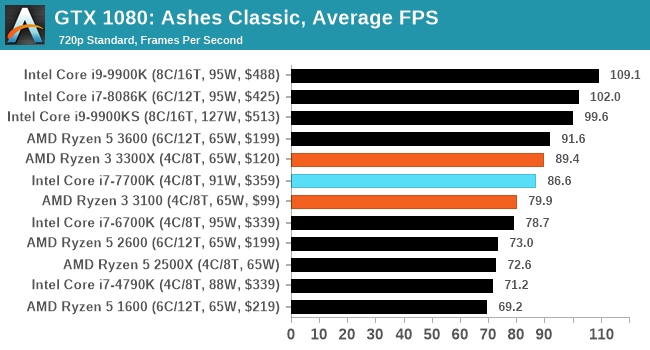 |
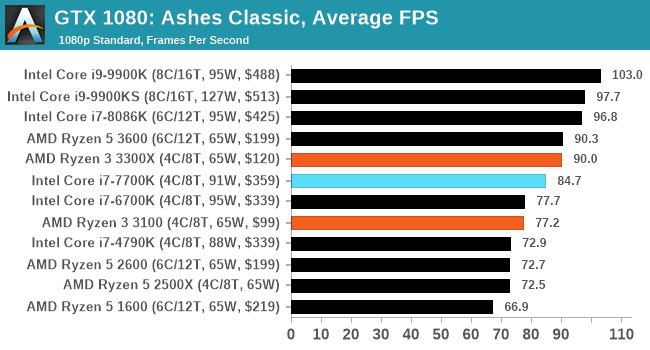 |
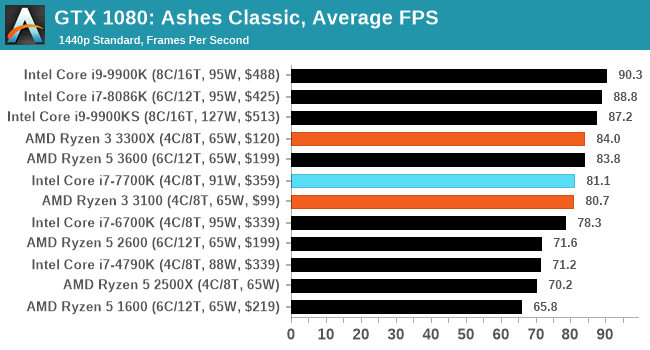 |
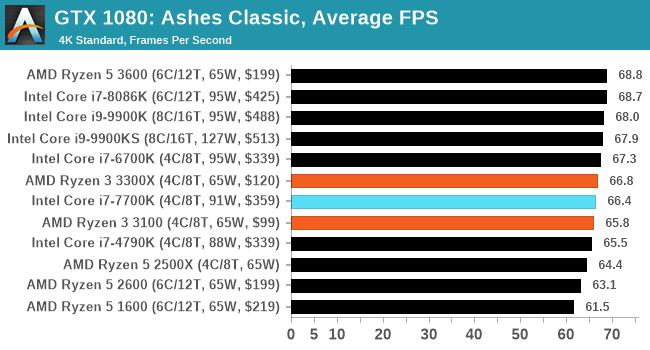 |
| 95th Percentile |  |
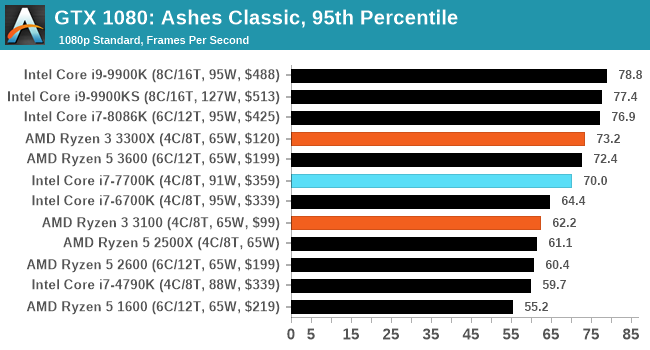 |
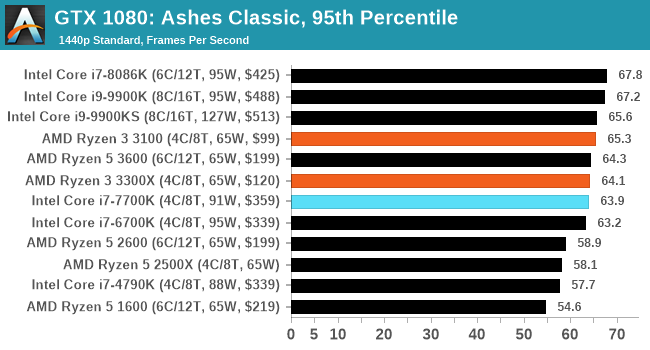 |
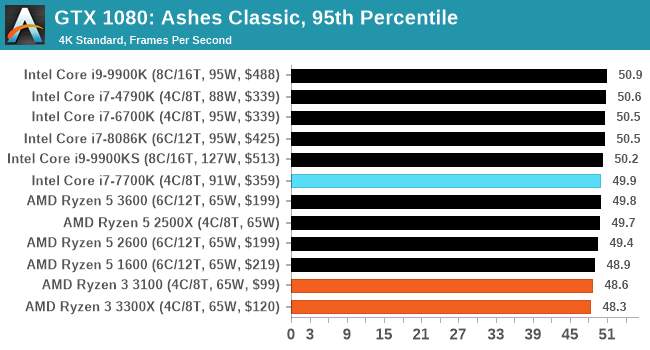 |


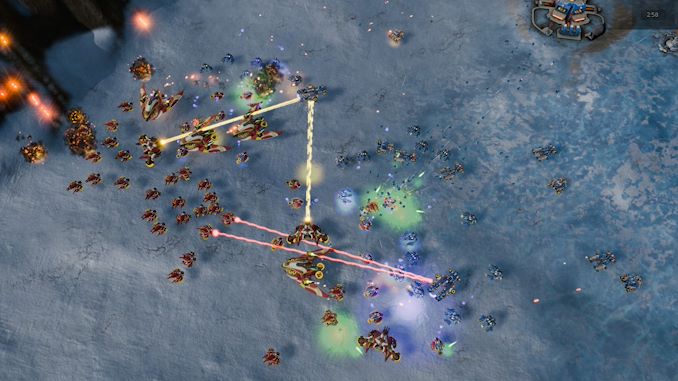









249 Comments
View All Comments
PeterCollier - Thursday, May 7, 2020 - link
Ugh, how much did Intel pay you for this article?kulareddy - Thursday, May 7, 2020 - link
How much did AMD pay you for this comment?callmebob - Thursday, May 7, 2020 - link
They paid him with old new stock of a dozen 1st gen Bulldozer CPUs.Just having the AMD logo on them will make him blissfully happy. No need to waste good products on him ;-)
kulareddy - Thursday, May 7, 2020 - link
👏👏👏PeterCollier - Saturday, May 9, 2020 - link
This makes no sense.Teckk - Thursday, May 7, 2020 - link
I genuinely want to understand why you think so?You really believe this article puts Intel's chips in a good light?
Would've preferred to see a set of different/recent processors in comparison but your comment is confusing lol.
Teckk - Thursday, May 7, 2020 - link
Arghhh .. meant as a reply to @PeterCollierkulareddy - Thursday, May 7, 2020 - link
👍PeterCollier - Friday, May 8, 2020 - link
Yestwtech - Friday, May 8, 2020 - link
I guess one point might be that in most of the comparisons, there are no higher-end AMD CPUs included. So you see that Intel's higher-end processors are better for gaming, but not that there are AMD options as well further up the chain.Even so, I think Intel holds the gaming FPS crown anyway for the moment, with their new 10900k (which isn't on this chart). That 5.3 boost clock should be pretty good for achieving maximal framerates.
Other than losing to Intel at max-FPS gaming though, AMD dominates all segments from a price/performance, raw performance, and power efficiency performance. Server, mobile, workstation, gaming, etc.